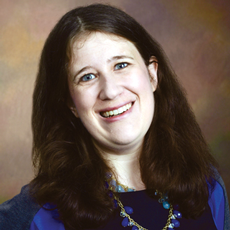
The World Cup and Georgetown Hoyas aside, my family has never been one to sit around the dinner table and discuss sports.
Instead, we talk about social plans with the zealousness of someone reciting Yankees or Cubs statistics: What we’re doing next week or month (sometimes year), where we’re going and who we’re seeing. If there were a Leis family crest, it would involve a Google calendar.
Obviously, not everyone has quite the same focus. But if there’s any area that could use a more systematic plan, it’s long-term care. That’s why all sides of the eldercare industry can cheer the California executive order of a master plan for aging.
The blueprint is meant to let everyone from state government to philanthropic organizations promote healthy aging in the state. Gov. Gavin Newsom (D) signed the order Monday. It brings some good news to providers in the state preparing for 2030, when more than there are projected to be an additional 4 million residents over age 65. The order includes 10-year targets and a directive for both a research and long-term care subcommittee to start.
“It’s a big deal for California,” SCAN Foundation President Bruce Chernof, M.D., told me Wednesday. “At the moment, long-term care in California struggles with “those who are well-to-do and those who are not. The system’s built for a different time and place.”
Among the plan’s directive is for the Long-Term Care Subcommittee to issue a report to the governor by March on stabilizing state long-term care programs and infrastructure.
A “thoughtful master plan acknowledges continuum,” Chernof said. “One of the problems for me in the aging space is that for a long time it’s been underrecognized and, in some areas, underfunded. It’s been very silent, with little silos that don’t talk to each other.”
Of particular interest is that the long-term care subcommittee’s report must address labor supply, stabilizing long-term care services and financing of long-term care. California’s unemployment rate is around 4.2%, meaning that it joins other states in struggling to fill healthcare roles.
Of course, it’s easy to scoff at the idea of meetings, committees or even plans for fixing huge structural problems. Plenty of us have started out with excitement for a plan and lost it through a series of mind-numbing meetings.
But Chernof pointed out the state’s master plans for transportation and education have made a demonstrated impact in the state.
The Master Plan for Aging “has the attention of the governor and the staff,” Chernof said. “One can be skeptical, but I wouldn’t be. I am expecting a blueprint the state will act on.”
He also noted that “California didn’t dream this up as a West Coast exercise.” Other high-performing states have master plans, and also have better outcomes, he said, adding that providers in states that don’t can be inspired to add their voice.
“It’s an opportunity for the [McKnight’s] readership to lead,” he said.
Follow Senior Editor Elizabeth Newman @TigerELN.



